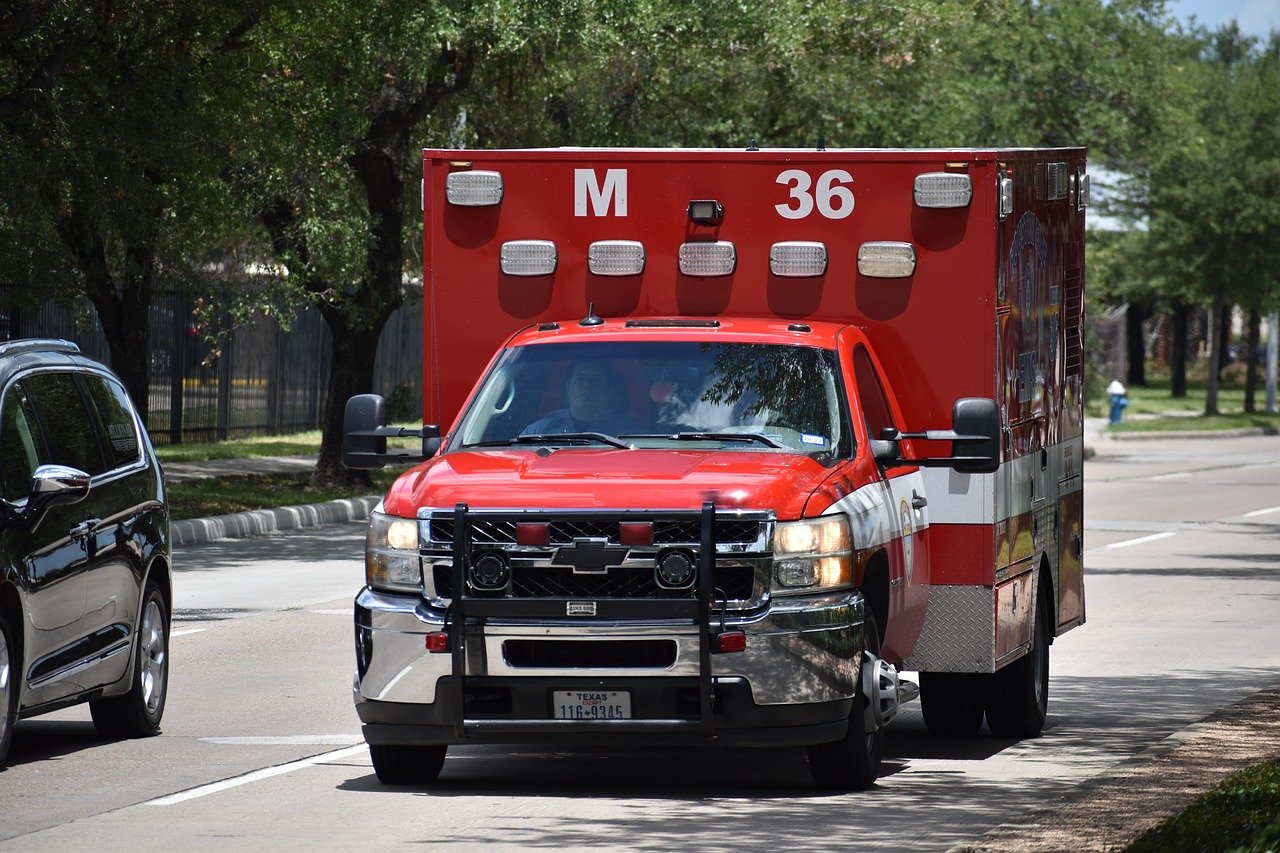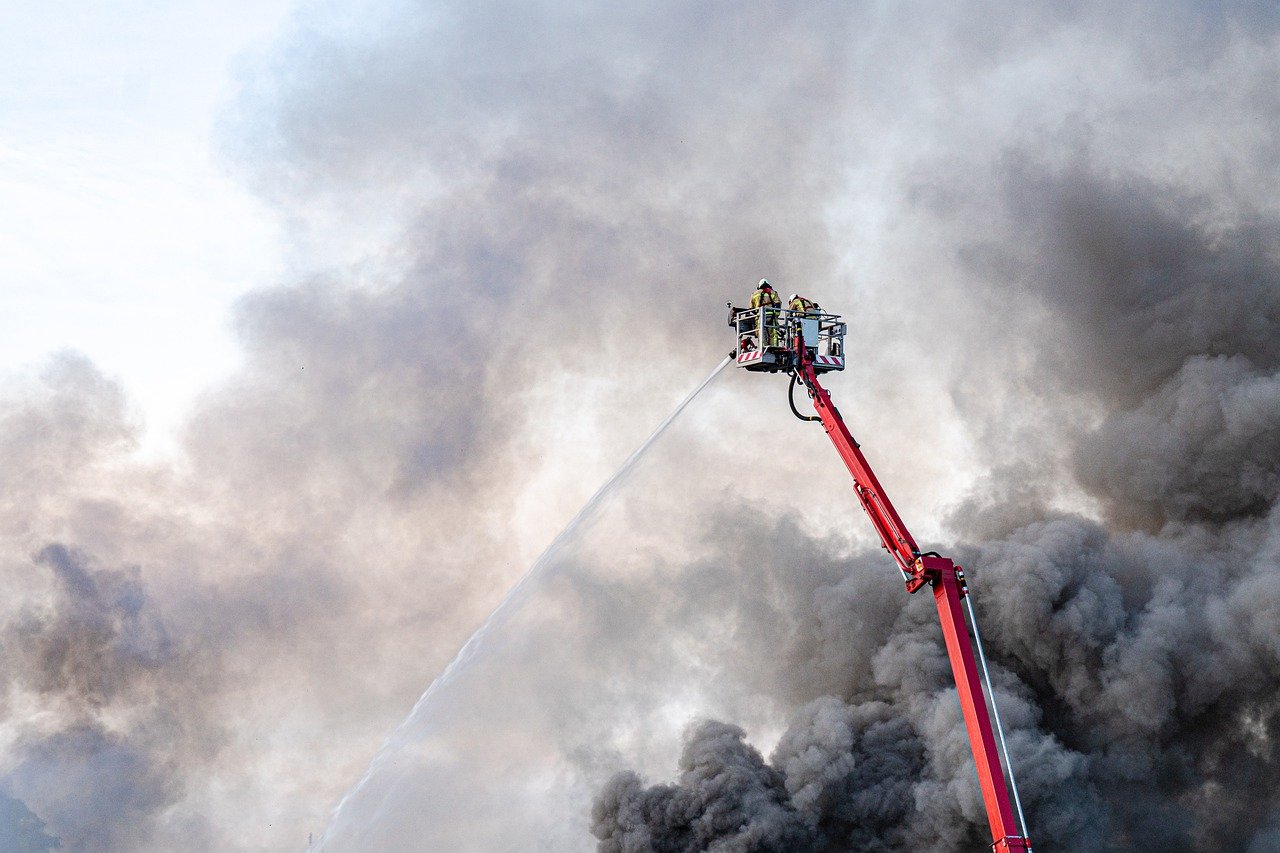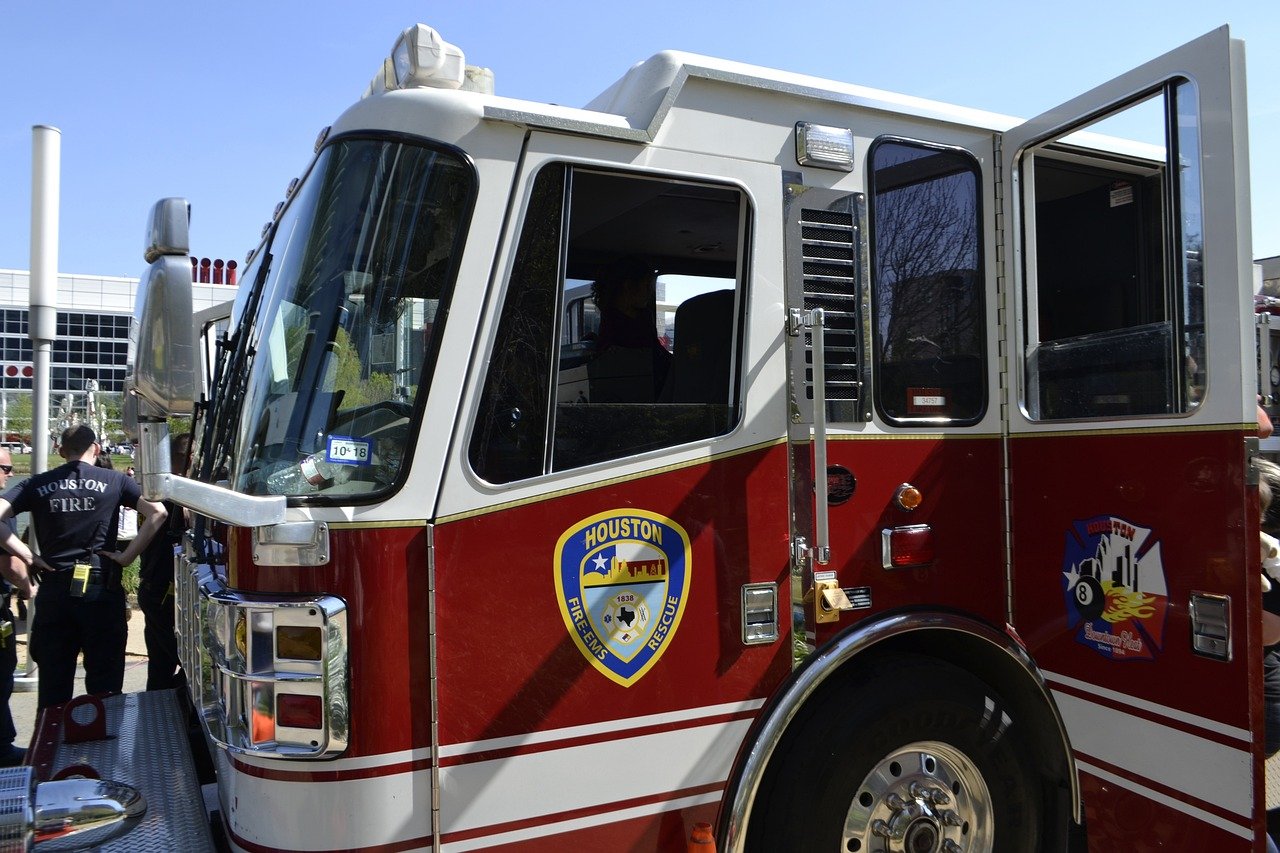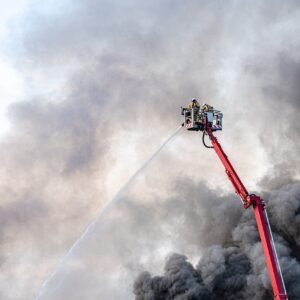In today’s unpredictable world, it is crucial to have a comprehensive emergency plan that can effectively address unexpected events. Whether it’s a natural disaster, a health crisis, or a sudden technological failure, being prepared can make all the difference in ensuring the safety and well-being of yourself, your loved ones, and your community. This article ‘Emergency Preparedness Guide: Key Steps to Protect Your Family and Community’ explores key considerations and practical steps that you can take to ensure that your emergency plan is not only adequate but also capable of handling any unforeseen circumstances that may arise. By prioritizing preparedness, you can gain peace of mind and be ready to face the unexpected with confidence.

The Importance of a Comprehensive Emergency Plan
Being prepared for unexpected events is crucial, and having a comprehensive emergency plan is a key component of preparedness. In times of crisis, every second counts, and having a well-thought-out plan in place can make all the difference. A comprehensive emergency plan takes into account various factors, such as understanding the risks, identifying critical components, allocating resources, testing and evaluating the plan, communicating it effectively, integrating technology and systems, addressing mental health and psychological support, considering legal and ethical aspects, and engaging the community. By following these guidelines, you can ensure that you are well-prepared to handle any unexpected event that may arise.
1. Understanding the Risks
To create an effective emergency plan, it is essential to begin by understanding the risks associated with your specific situation. This involves conducting a thorough risk assessment, evaluating vulnerabilities, and considering external factors that may impact your organization or community. By understanding the risks, you can prioritize and allocate resources effectively, ensuring that your plan addresses the most critical areas of concern.
Conducting a Risk Assessment
A risk assessment involves identifying potential hazards and assessing the likelihood and potential impact of each hazard. This can include natural disasters such as earthquakes, floods, or hurricanes, as well as human-made hazards like fires or chemical spills. By conducting a comprehensive risk assessment, you can gain a better understanding of the specific threats that your organization or community may face.
Evaluating Vulnerabilities
Once you have identified the potential hazards, it is crucial to evaluate the vulnerabilities that may exist within your organization or community. This involves assessing the weaknesses or areas where you may be particularly susceptible to the identified risks. Understanding vulnerabilities allows you to implement targeted strategies to mitigate the potential impact of an emergency.
Considering External Factors
While it is important to understand the internal risks and vulnerabilities, it is equally important to consider external factors that may impact your emergency plan. This can include factors such as the proximity of emergency services, the availability of resources, and any relevant regulations or guidelines imposed by local or national authorities. By considering external factors, you can ensure that your emergency plan aligns with existing frameworks and is compliant with applicable laws and regulations.
2. Identifying Critical Components
Once you have a clear understanding of the risks, it is time to identify the critical components of your emergency plan. These components serve as the foundation of your plan and include establishing communication protocols, designating an emergency response team, defining roles and responsibilities, developing evacuation plans, and creating medical emergency procedures.
Establishing Communication Protocols
Effective communication is essential during an emergency. Establishing clear communication protocols ensures that information can be disseminated quickly and efficiently to the relevant stakeholders. This may involve implementing a chain of command, utilizing communication tools and technologies, and establishing regular communication channels for both internal and external communication.
Designating an Emergency Response Team
Creating an emergency response team is vital to ensure a coordinated response during an emergency. This team should comprise individuals with the necessary skills and expertise to handle different aspects of the emergency. Each team member should have a designated role and responsibilities, and there should be clear lines of communication and decision-making within the team.
Defining Roles and Responsibilities
In addition to the emergency response team, it is essential to define the roles and responsibilities of all individuals within your organization or community. This includes identifying who will be responsible for specific tasks and ensuring that everyone understands their roles in the emergency plan. Clearly defined roles and responsibilities help minimize confusion and ensure a swift and effective response.
Developing Evacuation Plans
Evacuation plans are critical in situations where it is necessary to move people to safety quickly. These plans should include designated evacuation routes, assembly points, and procedures for assisting individuals with disabilities or other special needs. Regular drills and simulations should be conducted to familiarize everyone with the evacuation procedures and ensure a smooth and orderly evacuation process.
Creating Medical Emergency Procedures
Medical emergencies can occur during any crisis, and it is crucial to have procedures in place to address these situations. This includes ensuring access to medical supplies and equipment, designating personnel responsible for providing medical assistance, and establishing communication channels with medical professionals or emergency medical services. Having well-defined medical emergency procedures can save lives and minimize the impact of injuries during an emergency.
3. Allocating Resources
A comprehensive emergency plan requires the allocation of resources to effectively respond to an emergency. This includes financial planning, obtaining necessary equipment, training personnel, and building partnerships.
Financial Planning
Creating a budget and allocating financial resources to emergency preparedness is essential. Adequate funding ensures that necessary equipment, training, and personnel can be obtained and maintained. It is important to regularly review and update the budget to account for changes in requirements or new risks that may emerge.
Obtaining Necessary Equipment
Having the right equipment is crucial for an effective emergency response. This may include communication devices, first aid kits, emergency lighting, personal protective equipment, and any specialized equipment specific to the identified risks. Regular maintenance and testing of equipment should be carried out to ensure its reliability and functionality during an emergency.
Training Personnel
Properly trained personnel are the backbone of an emergency response. All individuals within your organization or community should receive appropriate training to ensure they understand their roles and responsibilities, as well as the procedures to follow in an emergency. Training should be regularly conducted, and refresher courses provided to maintain a high level of preparedness.
Building Partnerships
Collaborating with external organizations and agencies is an integral part of emergency preparedness. Building partnerships with local emergency services, neighboring communities, and other relevant stakeholders helps facilitate a coordinated response during an emergency. Sharing resources, expertise, and information strengthens the overall preparedness and response capabilities of the community or organization.

4. Testing and Evaluating the Emergency Plan
An emergency plan is only effective when it has been thoroughly tested, evaluated, and updated as necessary. Regular drills and simulations should be conducted to assess the response capabilities of individuals and teams. Gathering feedback from participants and stakeholders helps identify areas for improvement and ensures that the plan is continuously updated to address emerging risks or changing circumstances.
Conducting Regular Drills and Simulations
Drills and simulations allow individuals to practice their roles and responsibilities in a controlled environment. These exercises help identify gaps in knowledge or skills and allow for adjustments to be made to the emergency plan. Regular and realistic drills ensure that everyone is familiar with the procedures and can respond effectively during an actual emergency.
Gathering Feedback
Feedback from participants and stakeholders is invaluable in improving the emergency plan. Conducting debriefings after drills or simulations allows for open and honest communication about what went well and what could be improved. Feedback should be carefully considered and used to make necessary adjustments or enhancements to the plan.
Reviewing and Updating
An emergency plan should not be static but rather a living document that is regularly reviewed and updated. As new risks emerge or circumstances change, the plan should be modified accordingly. Regularly reviewing and updating the plan ensures that it remains relevant and effective in addressing the current needs and challenges.
5. Communicating the Emergency Plan
An emergency plan can only be effective if it is communicated clearly and effectively to all relevant parties. This includes internal communication within your organization or community, external communication with stakeholders, and creating awareness among individuals.
Internal Communication
Internal communication is crucial in ensuring that everyone within your organization or community understands the emergency plan. Regular communication channels should be established to disseminate information, provide updates, and address any questions or concerns. Training sessions and workshops can also be used to ensure that all individuals are familiar with the plan and their roles in its execution.
External Communication
Effective external communication ensures coordination with relevant stakeholders and agencies during an emergency. Contact information for emergency services, neighboring organizations or communities, and other key partners should be readily available. Establishing communication protocols and maintaining regular contact with external stakeholders helps facilitate a coordinated response and resource sharing.
Creating Awareness
Creating awareness about the emergency plan among individuals is crucial for a successful response. This can be done through various means, such as distributing informational materials, conducting awareness campaigns, and providing training to community members or employees. Awareness ensures that individuals know what to do in an emergency and can take appropriate actions to ensure their safety and the safety of others.

6. Integrating Technology and Systems
In today’s digital age, technology plays a significant role in emergency preparedness and response. Integrating technology and systems into your emergency plan can enhance communication, monitoring, and data analytics capabilities.
Utilizing Notification Systems
Notification systems enable rapid and widespread dissemination of critical information during an emergency. These systems can include text messages, email alerts, phone calls, or sirens. Implementing a robust notification system ensures that relevant stakeholders are promptly informed about the emergency and can take appropriate actions.
Implementing Monitoring and Surveillance
Monitoring and surveillance systems play a vital role in early detection, assessment, and response to emergencies. This includes the use of CCTV cameras, sensors, and other monitoring technologies to detect hazards or suspicious activities. By implementing monitoring and surveillance systems, you can proactively identify potential risks and respond swiftly.
Leveraging Data Analytics
Data analytics can provide valuable insights to enhance emergency preparedness and response. By analyzing historical data and real-time information, patterns and trends can be identified, allowing for better risk assessment and response planning. Data analytics can also help evaluate the effectiveness of the emergency plan and identify areas for improvement.
7. Addressing Mental Health and Psychological Support
During and after an emergency, it is crucial to address the mental health and psychological well-being of individuals affected. Psychological support should be an integral part of the emergency plan, ensuring that trauma-informed care is provided, personnel are trained in psychological first aid, and counseling resources are available.
Including Trauma-Informed Care
Trauma-informed care involves recognizing and responding to the impact of trauma on individuals’ mental health. Training personnel in trauma-informed care ensures that the emotional needs of individuals affected by an emergency are met. This includes understanding the signs of trauma, providing a safe and supportive environment, and promoting resilience and recovery.
Training for Psychological First Aid
Psychological first aid is a supportive intervention that helps individuals cope with the immediate emotional impacts of a crisis. Training personnel in psychological first aid equips them with the necessary skills to provide immediate emotional support, assess individuals’ needs, and refer them to appropriate resources. Psychological first aid can minimize the psychological impact of an emergency and promote faster recovery.
Providing Counseling Resources
Having counseling resources available during and after an emergency is essential. This can include access to mental health professionals, hotlines, or support groups. Making these resources known to individuals and ensuring their accessibility helps individuals process the emotional impacts of the emergency and seek the necessary support.
8. Considering Legal and Ethical Aspects
When creating an emergency plan, it is important to consider the legal and ethical aspects of emergency preparedness and response. This involves compliance with laws and regulations, ensuring informed consent and privacy, and making ethical decisions during emergencies.
Compliance with Laws and Regulations
Compliance with applicable laws and regulations is crucial in emergency preparedness and response. This includes ensuring that the emergency plan aligns with relevant legal frameworks, health and safety regulations, data protection laws, and any other applicable guidelines. Compliance helps safeguard individuals’ rights and ensures that legal obligations are met during an emergency.
Informed Consent and Privacy
Respecting individuals’ privacy and obtaining informed consent is essential when implementing an emergency plan. This includes handling personal information appropriately, communicating privacy practices, and obtaining consent for any data collection or sharing activities. Respecting privacy rights and obtaining informed consent builds trust and promotes a transparent and ethical approach to emergency response.
Ethical Decision-Making
During emergencies, ethical decision-making becomes paramount. Ethical considerations may include prioritizing the safety and well-being of individuals, ensuring fair allocation of resources, and respecting cultural or religious beliefs. By incorporating ethical principles into the emergency plan, you can ensure that decisions are made ethically and uphold the values and needs of the community or organization.
10. Engaging the Community
An effective emergency plan requires the active engagement and participation of the community. By involving the community in emergency preparedness and response, you can build resilience and enhance overall response capabilities.
Creating Community Emergency Response Plans
Creating community emergency response plans ensures that all members of the community are involved and prepared for emergencies. This can involve conducting community meetings, establishing volunteer networks, and providing training and resources to community members. By involving the community in the planning process, you can tap into local knowledge, skills, and resources, which can enhance the effectiveness of the emergency response.
Collaborating with Stakeholders
Collaborating with stakeholders is crucial in ensuring a coordinated and comprehensive emergency response. This includes working with local government agencies, non-profit organizations, businesses, educational institutions, and other relevant stakeholders. By establishing partnerships and sharing resources, you can leverage the expertise and capacity of various stakeholders to enhance emergency preparedness and response.
Promoting Citizen Awareness and Involvement
Promoting citizen awareness and involvement is key to building a resilient community. This can be done through educational campaigns, training programs, community exercises, and involving citizens in decision-making processes. By empowering citizens with knowledge and skills, you create a community that is actively engaged and ready to respond during an emergency.
In conclusion, having a comprehensive emergency plan is essential for preparedness and response during unexpected events. By understanding the risks, identifying critical components, allocating resources, testing and evaluating the plan, communicating it effectively, integrating technology and systems, addressing mental health and psychological support, considering legal and ethical aspects, and engaging the community, you can ensure that you are well-prepared to handle any emergency that may arise. By following these guidelines and continuously reviewing and updating your plan, you can enhance the safety and well-being of your organization or community and minimize the impact of unexpected events.

